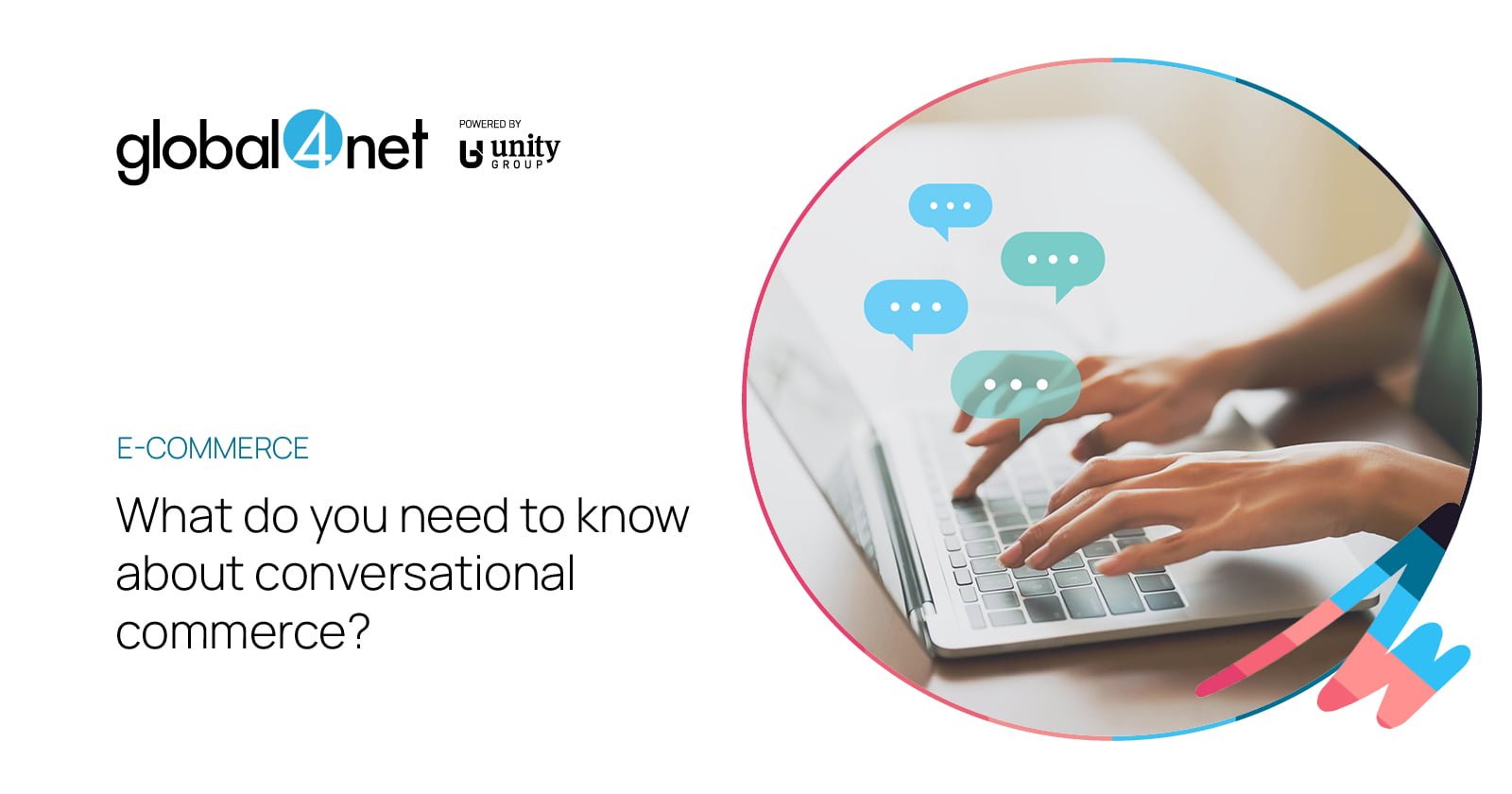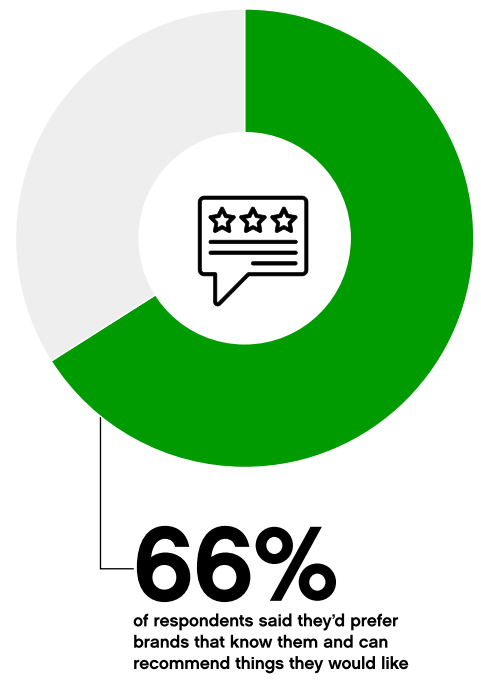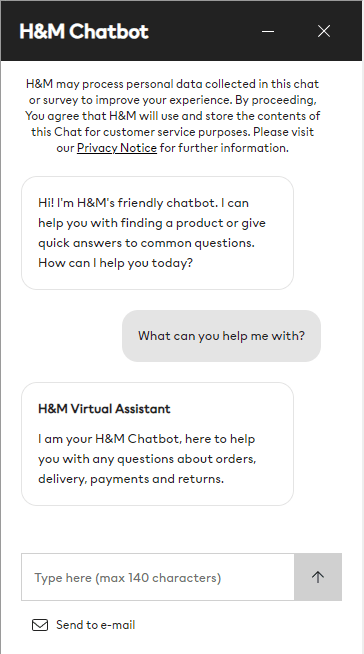ul. Strzegomska 2-4
53-611 Wrocław
NIP 8992786490
KRS 0000608120
REGON 363987723
Global4Net Sp. z o. o.
+48 71 358 41 00
© 2009 – Global4Net. All Rights Reserved.

Conversational commerce is an emerging trend in online trade that’s based on common communication channels and AI tools, especially chatbots and voicebots. With conversational commerce, your company can reach and advise customers 24/7, all year round. This, naturally, results in improved UX and several other benefits. If you run an online store, conversational commerce is definitely something you ought to consider.
When you take a look at this chart below showing total spending over conversational commerce channels worldwide (from 2021 to 2025), you can clearly see an upward trend:

Online stores have already recognized the potential of conversational commerce and are willing to invest in this solution. That’s not surprising, given the fact conversational commerce can help you run a more effective and profitable online business. But let’s start with defining this term.
In the offline world, shopping frequently entails talking to other people – salespeople, cashiers, customer service, helpline, etc. If:
Conversational commerce takes the fact that shopping means talking to other people and digitizes it. This is where two solutions come together – conversational AI and e-commerce (hence the name).
With conversational commerce, your customers can use common communication tools (e.g., online chat, Facebook Messenger, WhatsApp, etc.) and “talk” to virtual assistants that are available for them 24/7.
These virtual assistants are known as chatbots and voicebots. The first solution is fully text-based – a chatbot can talk to you via chat and respond in the form of written commands/answers and links to specific places on your website.
Voicebots, on the other hand, are voice-based, meaning you have to call the company to talk to them. Voicebots are actually far more advanced compared to chatbots as they require more technologies to work, e.g., relating to understanding human speech and generating relevant answers, also in the oral form.
Online stores and retail companies, in general, decide to implement a chatbot. They are relatively cheaper and easier to implement (at least compared to voicebots), and the truth is, a good chatbot can easily deal with the majority of customer queries.
Estimations are, as of 2023, chatbots can handle around 70%1 of customer queries and requests. Pretty good result, isn’t it?
So, what’s the result of implementing conversational commerce in your e-store? You have a chatbot that can handle the majority of your customers’ questions, and it can do so 24/7, all year round. A chatbot is never sick, it’s never tired or annoyed. Customers can get answers to everything they need to know without the need to wait on the helpline. It’s a clear win-win situation. But there are more benefits to using chatbots in your business.
Customers expect a personalized approach and quick answers. If your chatbot is integrated with your customer database and your e-commerce platform (i.e., it has access to a given customer’s interests and past purchases), it can provide users with great UX.
According to last year’s Gladly.com report, personalized approach and product recommendations can make the majority of your customers pick your brand over competitors:

Product recommendations can also help you sell more products and increase AOV (average order value). For example, chatbots are great for cross-selling and upselling. Such a suggestion could be made immediately after your customer puts a given product in the cart. The chatbot box could appear and say something like this: “I see you want to buy X. Good choice! Have you thought about adding Y to your order as well? If you do, you will get free delivery!”
Would such a short message be effective? Undoubtedly!
Customers always have tons of questions. Where is my order? Do you have these shoes in my size? Where can I find the product return policy? Where is the nearest brick-and-mortar store? These questions usually require short and repetitive answers. Therefore, this is something your chatbot can take care of for you. As a result, your customer support team can focus on complex customer problems, and those customers who want to get short and quick answers get just that via your chatbot.
We live in an omnichannel world. Customers want to use different communication channels to get in touch with your business, and they expect you to maintain the communication flow as they switch channels. This includes your website, social media profiles, and a mobile app. In all those channels, a chatbot can be a vital source of support, especially when it’s integrated with other customer-facing systems. With a good chatbot, you can provide awesome support to your customers, no matter their preferred channel.
Now you know what conversational commerce is about and what the benefits are for your business. Next, we want to show you two examples of real-life chatbots in the retail sector.
This large international fashion company has a chatbot implemented on its website. In order to talk to it, you have to open the chat box in the lower right corner of the website. H&M’s chatbot was programmed to help customers with four common topics:
If you want to test it yourself, you can go to the company’s customer service subpage. Once you finish your conversation with this chatbot, you can send it to your email for future purposes.

It’s an American cosmetics brand retailer specializing in skin, hair, and body care products. Just like H&M, Kiehl’s also decided to place their chatbot on a website, but it’s available in the lower left corner (a less popular solution). Kiehl’s uses the simplest form of a chatbot there is – a rule-based chatbot. This means that customers cannot type in a specific query in the chat box. They can only pick one of the available options, just like in the screen below:

Such a chatbot is above all faster and cheaper to implement. But because it doesn’t use AI (or use it in a very limited form), it cannot offer as high UX as advanced AI-powered chatbots (e.g., Google chatbot or chatbot OpenAI).
At Global4Net, we specialize in supporting online stores. If you’re thinking about building or improving an online store for your company, we’re happy to help. We can also help you implement a chatbot for your e-business. Drop us a line to find out more!
Write to us




